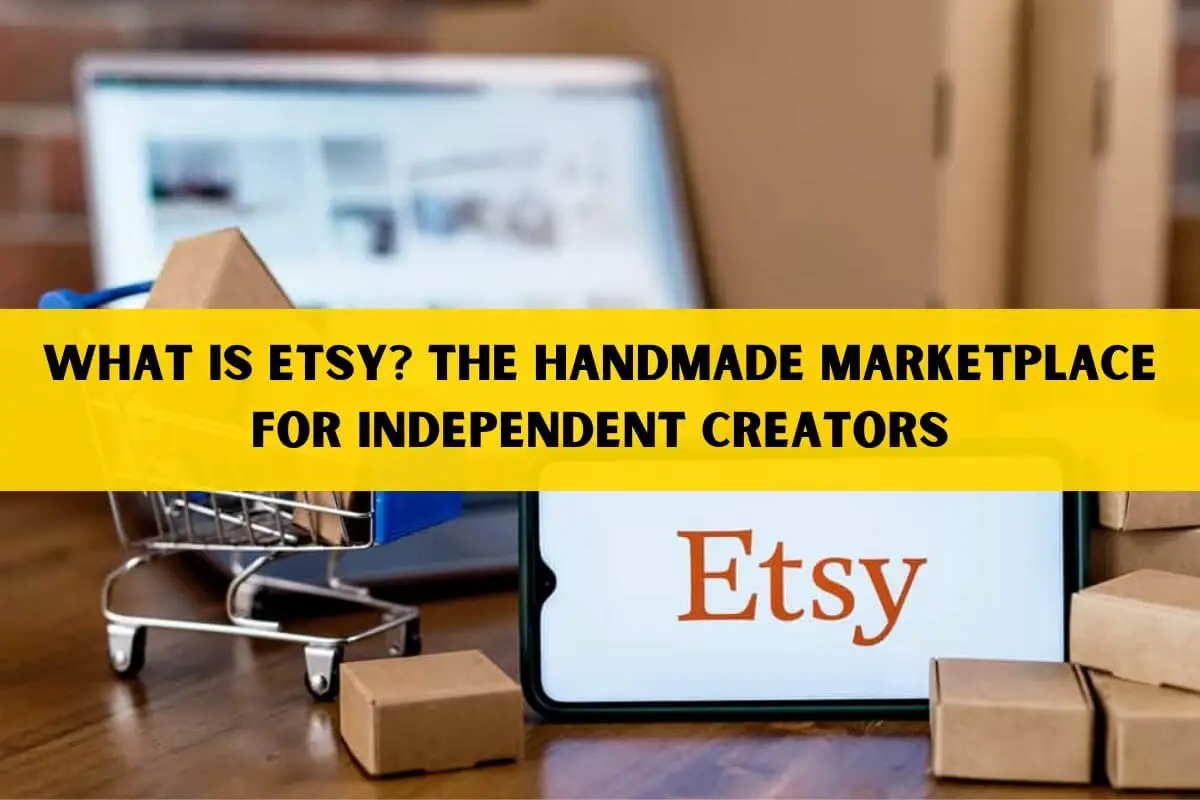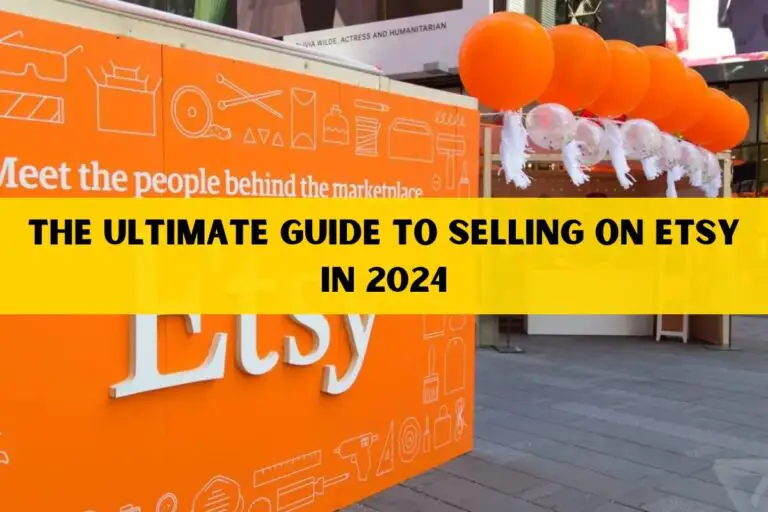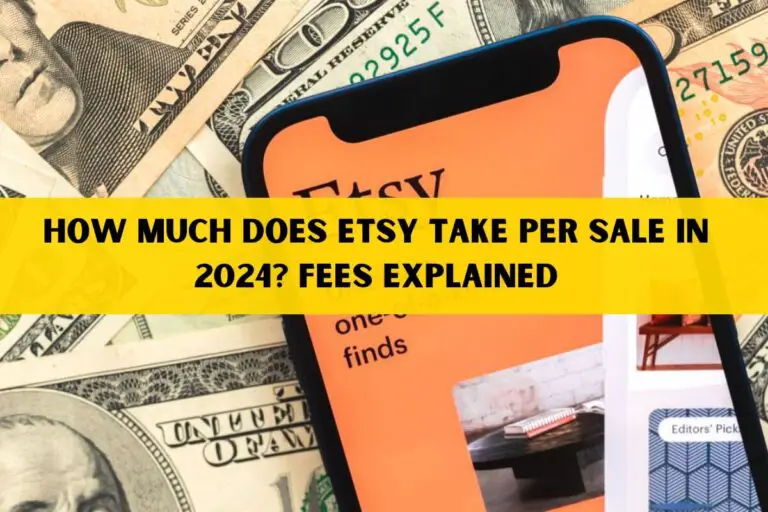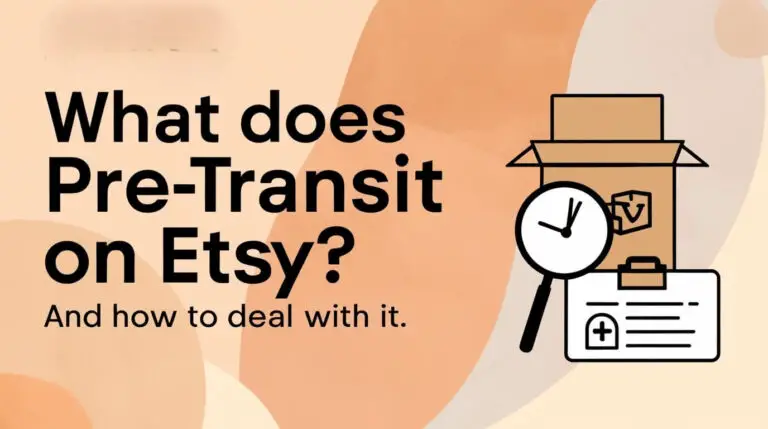What is Etsy? The Handmade Marketplace for Independent Creators

In today’s fast-paced digital world, where mass-produced goods are the norm, the desire for unique, handmade, and personalized products has become increasingly popular. This is where Etsy comes into play – a vibrant online marketplace that has revolutionized the way independent creators and customers connect. But what exactly is Etsy, and how does it work?
Etsy is an e-commerce platform that allows millions of independent artists, crafters, and collectors to sell their handmade, vintage, or craft supply items to a global audience. It provides a user-friendly platform for these sellers to establish their online shops and showcase their unique creations.
Let’s explore Etsy, the popular online marketplace. We’ll look at its origins, how it works for buyers and sellers, its rules, and the reasons behind its huge success. Get ready to understand this platform that connects makers and shoppers.
The Origins of Etsy: From a Humble Idea to a Global Phenomenon
Etsy’s journey began in 2005 when Robert Kalin, a computer programmer and artist, struggled to find a platform to sell his handmade creations online. Recognizing a gap in the market, he teamed up with Chris Maguire, Haim Schoppik, and Jared Tarbell to create a dedicated marketplace for independent artists and crafters.
The name “Etsy” was derived from a combination of the Italian word “etsi,” meaning “oh, yes,” and the Latin and French phrase “what if.” This unique moniker perfectly encapsulated the platform’s mission: to provide a space for creative individuals to pursue their passions and turn their “what ifs” into tangible realities.
From its humble beginnings in a Brooklyn apartment, Etsy quickly gained traction, attracting a community of passionate creators and customers seeking one-of-a-kind items. In 2007, it had surpassed the $26 million mark.
Etsy’s Business Model: Empowering Independent Creators
At its core, Etsy’s business model is built around connecting independent creators with customers seeking unique, handmade, or vintage goods. Unlike traditional e-commerce giants like Amazon or eBay, Etsy doesn’t maintain its inventory or warehouses. Instead, it provides a platform for millions of individual sellers to showcase and sell their creations directly to buyers worldwide.
One of the key aspects that sets Etsy apart is its stringent policies regarding the types of products allowed on the platform. All items listed must be handmade, vintage (at least 20 years old), or craft supplies. This ensures that customers can trust the authenticity and uniqueness of the products they purchase.
How Etsy Works for Buyers
For buyers, Etsy offers a seamless and user-friendly shopping experience. Users can browse through a vast selection of categories, ranging from jewelry and clothing to home decor, art, and collectibles. The platform’s search functionality allows customers to find specific items or explore shops based on their interests and preferences.
Once a buyer finds an item they wish to purchase, they can add it to their cart and proceed to checkout. Etsy offers various payment options, including credit cards, PayPal, and Etsy gift cards, making the transaction process convenient and secure.
Buyers can communicate directly with sellers, ask questions about products, and leave reviews based on their shopping experience. This level of transparency and interaction fosters a sense of community and trust between buyers and sellers.
How Etsy Works for Sellers
For sellers, Etsy provides a platform to showcase their creativity and entrepreneurial spirit. Setting up an Etsy shop is a straightforward process that involves creating an account, choosing a shop name, and listing products for sale.
Sellers have the freedom to set their prices, manage inventory, and handle shipping logistics. They can also customize their shop’s branding, including banners, logos, and product descriptions, to create a unique and memorable shopping experience for customers.
To ensure visibility and reach, Etsy offers various tools and services for sellers, such as promoted listings, which allow sellers to advertise their products within the platform’s search results. Additionally, Etsy provides resources and tutorials to help sellers optimize their shops and increase sales.
Etsy’s Fees and Pricing Structure
While Etsy provides a platform for independent creators to thrive, it also generates revenue through various fees and pricing structures. Understanding these fees is crucial for both buyers and sellers to make informed decisions.
Listing Fees
Sellers on Etsy are required to pay a flat listing fee of $0.20 for each item they list in their shop. This fee is charged every four months or when the item is sold and relisted.
Transaction Fees
In addition to the listing fee, Etsy charges a transaction fee of 6.5% of the total sale price, including shipping costs. This fee is deducted from the seller’s earnings when an item is sold.
Payment Processing Fees
Etsy offers its payment processing system, Etsy Payments, which charges a fee of 3% of the total sale price, plus a flat fee of $0.25 per transaction for sellers based in the United States. For sellers outside the US, the payment processing fees may vary.
Additional Fees
Sellers can opt for additional services provided by Etsy, such as advertising their listings through Etsy Ads or purchasing shipping labels directly from the platform. These services come with their respective fees, which are clearly outlined by Etsy.
Etsy’s Impact and Success
Etsy’s success goes beyond mere financial gains. The platform has become a driving force in the movement towards sustainable and ethical consumption, empowering independent creators and promoting the appreciation of handmade and unique goods.
Supporting Small Businesses and Independent Creators
One of Etsy’s most significant impacts has been its ability to provide a global platform for small businesses and independent creators. By eliminating the need for physical storefronts and extensive marketing budgets, Etsy has leveled the playing field, allowing creators to reach customers worldwide.
This has not only fostered economic opportunities for individuals but has also contributed to the growth of local economies and the preservation of traditional crafts and artisanal skills.
Promoting Sustainable and Ethical Consumption
In an era where mass-produced goods and fast fashion dominate the market, Etsy has become a beacon for sustainable and ethical consumption. By offering handmade, vintage, and craft supply items, the platform encourages customers to embrace a more mindful approach to shopping.
Etsy’s commitment to sustainability extends beyond its product offerings. The company has implemented various initiatives to reduce its environmental impact, such as offering eco-friendly packaging options and offsetting carbon emissions through renewable energy investments.
Building a Vibrant Community
One of Etsy’s greatest strengths lies in the vibrant community it has fostered. The platform serves as a hub for creators and customers to connect, share ideas, and support one another. Etsy sellers often collaborate, offer advice, and even partner on creative projects, fostering a sense of camaraderie and collective growth.
Etsy’s transparency and open communication have built trust and loyalty with customers. Buyers can interact with sellers, ask questions, and learn about the creative process behind their purchases.
Etsy’s Competitive Landscape and Future Outlook
While Etsy has established itself as a leading platform for independent creators, it operates in a competitive e-commerce landscape. Platforms like Amazon Handmade, Shopify, and Big Cartel offer similar services, catering to the growing demand for unique and handmade products.
Etsy’s community-driven marketplace and strict authenticity policies give it a competitive edge. As consumers prioritize environmental and social responsibility, Etsy’s focus on sustainability and ethical consumption sets it up for continued growth and success.
Looking ahead, Etsy’s future outlook remains promising. The company continues to invest in technological advancements, such as artificial intelligence and machine learning, to enhance the shopping experience and optimize product recommendations. Additionally, Etsy’s expansion into international markets and strategic acquisitions, like the purchase of Reverb (a platform for buying and selling musical instruments), further solidify its position as a leader in the handmade and vintage goods marketplace.
The Etsy Phenomenon
Etsy’s meteoric rise can be attributed to a combination of factors that have resonated deeply with consumers and sellers alike. At its core, Etsy represents a rejection of mass-produced, cookie-cutter products in favor of handmade, one-of-a-kind items that celebrate individuality and craftsmanship.
In an era where big-box retailers and e-commerce giants often prioritize efficiency and cost-cutting over quality and authenticity, Etsy has carved out a niche for itself as a haven for those seeking unique, personalized, and meaningful products. From handcrafted jewelry and artisanal home decor to vintage finds and artisan-made apparel, Etsy’s diverse marketplace offers a treasure trove of items that cannot be found elsewhere.
Empowering Independent Creators
One of the key drivers behind Etsy’s success is its ability to empower independent creators and small businesses. By providing a user-friendly platform and a global marketplace, Etsy has democratized the process of selling handmade goods, enabling artisans and entrepreneurs to reach a vast audience without the overhead costs and barriers associated with traditional retail channels.
Etsy’s commitment to supporting its community of sellers extends beyond merely providing a virtual storefront. The company offers a wealth of resources, educational materials, and tools to help sellers navigate the intricacies of running an online business, from marketing and branding to shipping and customer service.
Fostering Community and Connections
Another aspect that sets Etsy apart is its ability to foster a sense of community and connection among buyers and sellers. Unlike large e-commerce platforms that can often feel impersonal and transactional, Etsy encourages direct communication and interactions between sellers and customers.
Buyers can ask questions, request customizations, and even forge lasting relationships with the artisans behind the products they purchase. This personal touch not only enhances the shopping experience but also fosters a deeper appreciation for the craftsmanship and effort that goes into each handmade item.





